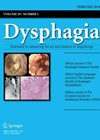In the West of Scotland, what factors impact and what are the survival trends for laryngeal cancer?
The TV and radio presenter Jamie Theakston recently returned to his radio show to announce he is cancer free. He had been off air for a year after having surgery to treat early-stage laryngeal cancer. His diagnosis was made when...
Outcomes of reirradiation for recurrent head and neck SCC
Recurrent squamous cell carcinoma of the head and neck is often a challenge to manage when radiotherapy has previously been administered as a component of the initial treatment. Salvage surgery is usually the preferred modality of treatment, but for unresectable...
Bones, stones and surgical moans: rethinking PTH dynamics in parathyroid surgery
Intraoperative parathyroid hormone (IOPTH) testing has revolutionised minimally invasive unilateral parathyroidectomy (MIP) as the gold standard treatment for primary hyperparathyroidism, replacing old-timey four-gland exploration. IOPTH testing ensures reliable excision of all hypersecreting glands, including those pesky hard-to-find ones, without relying...
Current AI audiology knowledge
Artificial intelligence (AI) tools are becoming increasingly popular and can be utilised by patients, healthcare professionals and students. The performance of chatbots can be variable between different AIs and, indeed, different topics. There is no current consensus for the best...
Measuring radiation fibrosis in patients with head and neck cancer
People treated with radiotherapy for head and neck cancer experience several acute and chronic effects of this treatment, of which fibrosis is perhaps the most common. Fibrosis occurs as a wound healing response and leads to scarring and reduced range...
Quinsy and culture
Peritonsillar abscesses are frequently encountered in clinical practice. Standard treatment includes empirical medical treatment and drainage. This study aimed at evaluating the value of culture and sensitivity testing of the aspirate in guiding antibiotic treatment. Patients received empirically amoxycillin, amoxycillin...
Audiological outcomes after CI in patients with inner ear schwannomas
In the last decade, several case series and case reports describing hearing rehabilitation with cochlear implants (CI) in patients with inner ear schwannomas (IES) have been published. This systematic review and meta-analysis studied audiological outcomes from 110 patients (111 ears)...
Falls and ASL users
A mixed-method pilot study was carried out to assess the cognitive load of sign language among users and, consequently, the possible risk of injurious falls. The study specifically investigated the possible risk of falls due to the simultaneous activity of...
Are they just ignoring you?
The clarity of hearing in background noise, which is influenced by the signal-to-noise ratio, has been a much-debated topic over many years from various angles. This study looks at anaesthetised cats and, as cats are not commonly known for their...
Help seeking for tinnitus – experiences of the diagnostic and treatment process
Population-based and self-selecting adult participants of this Australian cohort study (n=281) completed survey questions exploring varied outcome measures related to tinnitus. Primary outcomes assessed communication of initial tinnitus diagnoses and subsequent treatment offering, with participants rating their satisfaction at the...
Swallowing the risk: managing dysphagia in aged care
The risk of dysphagia increases with age and the prevalence of dysphagia in aged care facilities is 41–52%. Dysphagia increases the risk of aspiration, asphyxiation, malnutrition, pneumonia and ultimately death. Modifying food and fluids, by providing mashed or pureed foods...
One-stage laryngotracheal reconstruction in young infants
Airway inadequacy is a significant problem in young infants and may go undetected until inflammatory conditions trigger acute episodes, some of which require a tracheostomy. In addition to breathing difficulties, feeding problems are also common. This study involves 11 children...


















